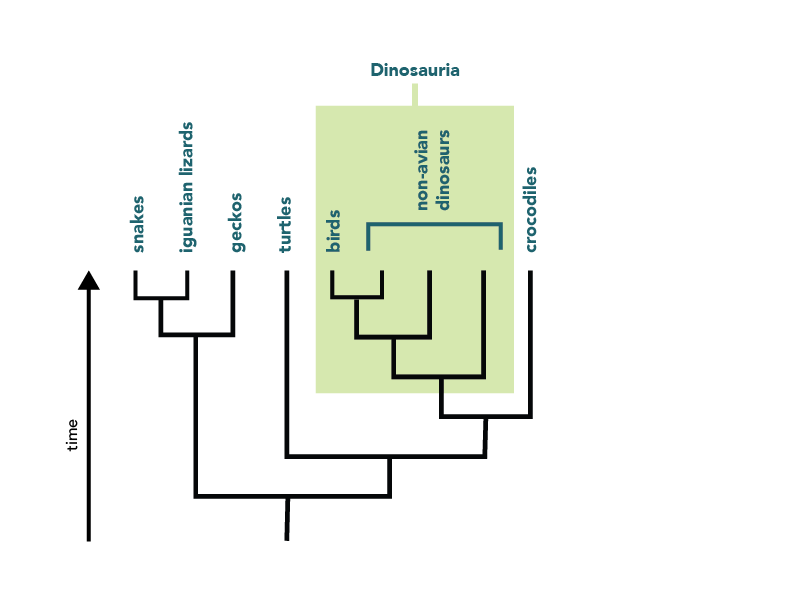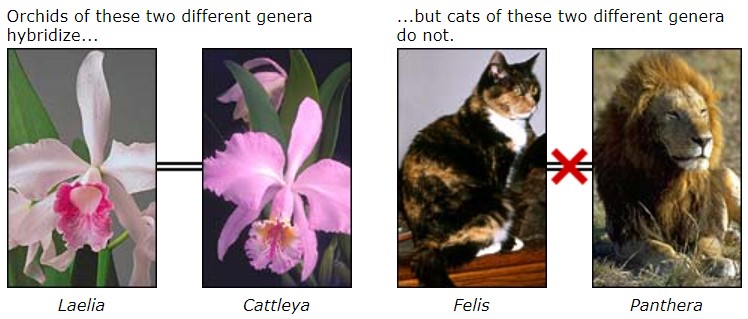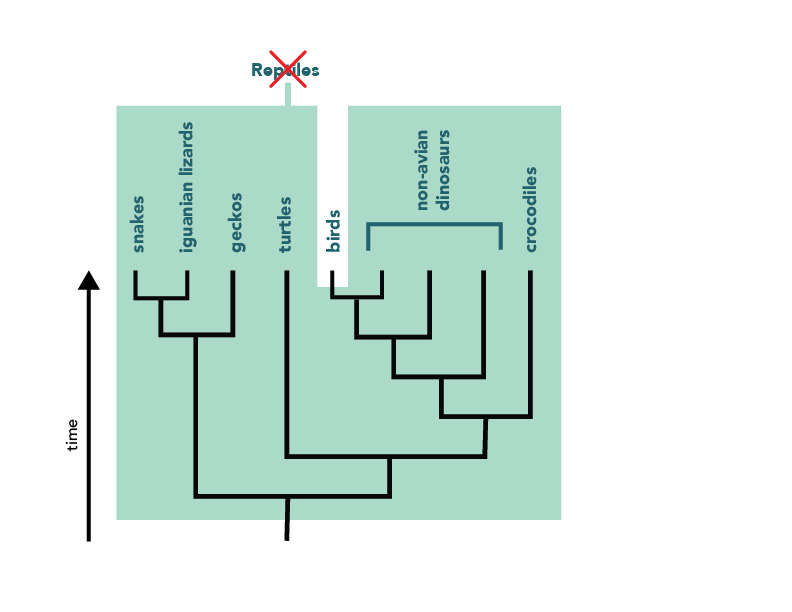Clearly, evolutionary trees convey a lot of information about a group’s evolutionary history. Biologists are taking advantage of this by using a system of phylogenetic classification, which conveys the same sort of information that is conveyed by trees. In contrast to the traditional Linnaean system of classification, phylogenetic classification names only clades. For example, a strictly Linnaean system of classification might place the birds and the non-Avian dinosaurs into two separate groups. However, the phylogeny of these organisms reveals that the bird lineage actually branches off of the dinosaur lineage, and so, in phylogenetic classification, the birds should be considered a part of the group Dinosauria.

Advantages of phylogenetic classification
Phylogenetic classification has two main advantages over the Linnaean system. First, phylogenetic classification tells you something important about the organism: its evolutionary history. Second, phylogenetic classification does not attempt to “rank” organisms. Linnaean classification “ranks” groups of organisms artificially into kingdoms, phyla, orders, etc. This can be misleading as it seems to suggest that different groupings with the same rank are equivalent. For example, the cats (Felidae) and the orchids (Orchidaceae) are both family level groups in Linnaean classification. However, the two groups are not comparable:
- One has a longer history than the other. The first representatives of the cat family Felidae probably lived about 30 million years ago, while the first orchids may have lived more than 100 million years ago.
- The have different levels of diversity. There are about 35 cat species and 20,000 orchid species.
- They have different degrees of biological differentiation. Many orchids belonging to different genera are able to hybridize. But the same is not true of cats — house cats (belonging to the genus Felis) and lions (belonging to the genus Panthera) cannot form hybrids.

There is just no reason to think that any two identically ranked groups are comparable and by suggesting that they are, the Linnaean system is misleading. So it seems that there are many good reasons to switch to phylogenetic classification. However, organisms have been named using the Linnaean system for many hundreds of years. How are biologists making the transition to phylogenetic classification?
Switching to phylogenetic classification
Biologists deal with phylogenetic classification by de-emphasizing ranks and by reassigning names so that they are only applied to clades. This means that your use of biological names doesn’t have to change very much. In many cases, the Linnaean names are perfectly good in the phylogenetic system. For example, Aves, which is the class of birds in the Linnaean system, is also used as a phylogenetic name, since birds form a clade.
Most of the specific names that you are accustomed to using (e.g., Homo sapiens, Drosophila melanogaster) have not changed at all with the rise of phylogenetic classification. However, there are some names from Linnaean classification that do NOT work in a phylogenetic classification. For example, the reptiles do not form a clade (and cannot be a named group in the phylogenetic system) — unless you count birds as members of Reptilia too.

Need a review of phylogenetic classification? See a summary of the topic in Evolution 101.
